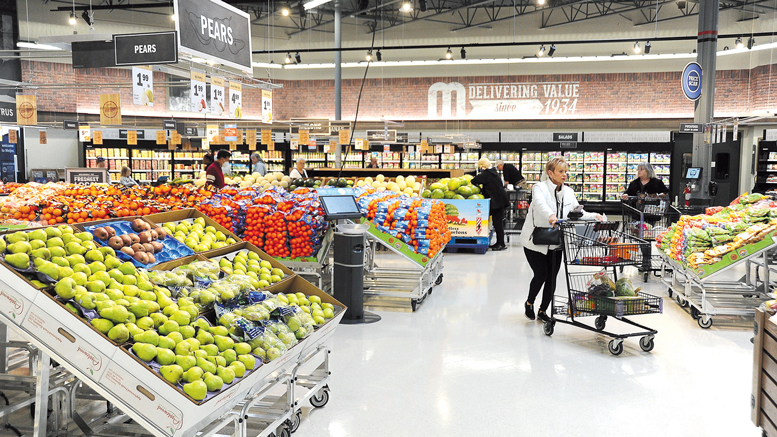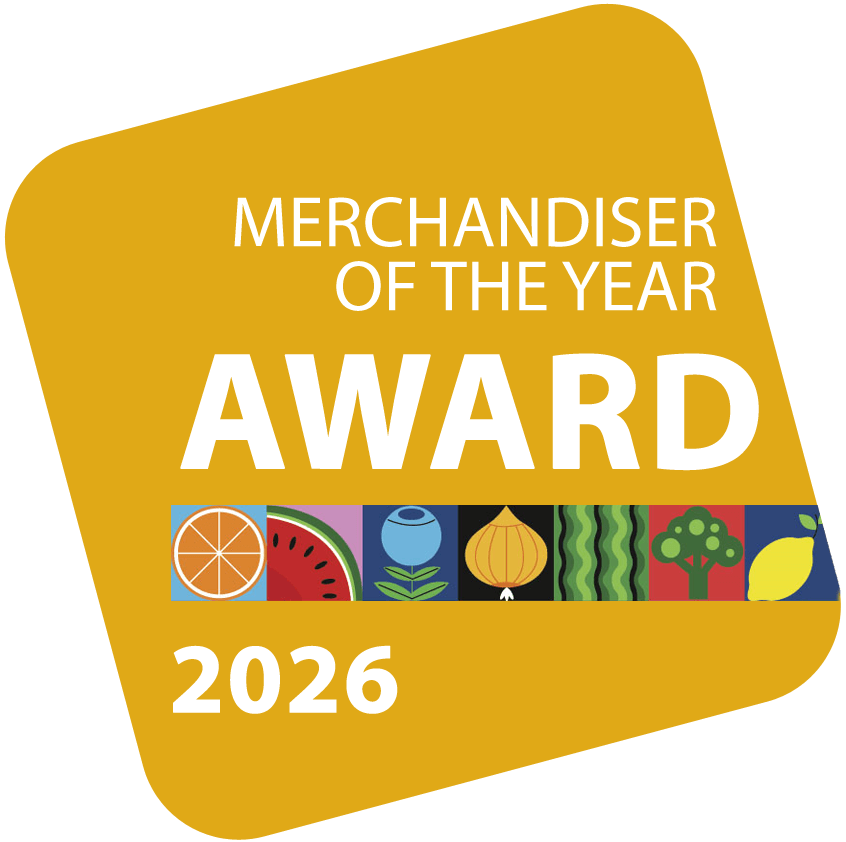Produce Makes Ohio Proud
July 9, 2024 | 9 min to read
Ohio’s agricultural sector, highlighted by the Ohio Proud program, thrives through support from major retailers like Kroger and Giant Eagle. The state’s diverse microclimates yield a vast array of fresh produce, bolstered by efficient infrastructure helpful for trade. Farms like Buurma Farms and Holthouse Farms focus on quality and sustainability, ensuring fast delivery of locally-grown fruits and vegetables within 24 hours. This robust regional system reflects Ohio’s commitment to local produce.

Ohio’s local infrastructure encourages and bolsters fresh produce trade.
The name of the state’s marketing program — Ohio Proud — aptly describes the philosophy and the success of Ohio’s agricultural sector.

PHOTO COURTESY MEIJER
DIVERSIFICATION A KEY
Ohio’s variety of soil types and microclimates produces an astounding diversity of vegetables and fruits. Widespread facilities blanket the entire value chain, but the fresh market fosters the full range of production methods. Consequently, the local market is thriving, but what’s more, Ohio’s superior and affordable infrastructure encourages and ultimately bolsters trade.
Ohio’s location is a marketer’s dream. The state is within 600 miles of 60% the U.S. population. That 600-mile radius includes most of the Eastern Seaboard, the Midwest, much of the South, and some states west of the Mississippi River. That radius also includes the most populous parts of Ontario and Quebec, in Canada.
HERITAGE GROWERS
Around the 1890s, Frank Buurma, a Dutch immigrant farming around Kalamazoo, MI, learned of modestly priced swamp land available in the area now named Willard, OH. Buurma and a group of other Dutch immigrants, including the Holthouses and Wiers, moved to Ohio and began the monumental effort of draining the swamp land, building dikes and canals, and reaching the fertile muck below.
At first, Buurma’s sole four acres grew only celery, but today, Burma Farms’ strength is its breadth of fresh produce.
“Our niche is diversity,” says Chadd Buurma, president. With a supply line of 25 different items and distribution of 30 others, he adds, “we can be a one-stop shop.”
“We quit retailing celery, 10 to 15 years ago. It’s a very expensive crop to grow. It needs a certain soil, and a couple of inches water every week.” He adds, though, that their farm in Michigan produces celery for their market.
During the early summer, dill, cilantro, and parsley herbs spur demand, along with the vegetables designated Southern creamers.
With about 2,500 acres, Buurma Farms in Willard and in Michigan tweaks plantings each season. Tastes change, Buurma reports, “Napa cabbage and kale had peaks, but now have leveled off.”
He suggests trying other vegetables. “Consumers overlook radishes. They bring color and snap. For 10 years, we’ve worked to build great flavor.”
He also urges retailers (and shoppers) to try fresh red, romaine, and other colored lettuces. “Mix and match the flavors.”
“We’re seasonal and always fresh,” Buurma promises. They ship about 2 million packages a year, most east of the Mississippi River. Their Holland Brand will satisfy customers until November.
A family farm for five generations, Holthouse Farms of Ohio, Inc., Willard, OH, is one of the original farms of the swamp-clearing group. Proud of its heritage and current sustainability, co-owner Ken Holthouse says, “We’ve been caretakers of the land for over 100 years. We’ve always known that we have to take care of the land if we expect it to take care of us.”
Holthouse advertises, “Want the freshest possible produce?” and features a wide circle on a map centered on Willard. If a customer is within that circle, Holthouse Farms says they can have their produce on patron’s shelves within 24 hours of harvest. Points within that circle include Philadelphia, Ottawa, Atlanta and Cedar Rapids.

PHOTO COURTESY HOLTHOUSE FARMS
In addition, Holthouse partners provide year-round offerings. Its Florida and Georgia production moves northward to capitalize on the growing seasons.
Co-owner Kirk Holthouse suggests money could be saved if consumers and retailers would be more satisfied with very minor differences in size or shape of many produce items. In addition, taste would not be compromised, and also much waste would be eliminated.
The Wiers Farm, Willard, OH, began in 1896 on five acres of muck soil. Today, the farm seeds, grows, harvests, packs, cools, and ships an impressive array of vegetables.
Sales specialist Hunter Wiers updates how the farm continues to change. “In the last few years, we have experienced a noticeable uptick in demand for typically West Coast-dominated items. Ohio-grown cilantro, parsley, green onion, lettuce, broccoli, etc. have all been commodities gaining popularity across our offering, as buyers look for freight savings and extended shelf life.”
Wiers says eastern vegetable commodities remain its most popular items by volume. “Sweet corn, cucumbers, green bell peppers, squash, and more are still favorites across our customer base.”
With growing locations in Georgia and Florida in addition to Ohio, Wiers Farm offers those items year-round as well, and a sister company handles the shipping.
“Our sister company Dutch Maid Logistics, Willard, OH, allows us to execute complex, delivered veg programs across the Midwest and East Coast,” Wiers says. “Retail and foodservice operators are actively trying to combat rising costs, so shelf life is a main focus. Logistics is one part of the puzzle of getting produce from field to the end consumer quickly.”
SPECIALTY GROWERS
Cabbage, Inc., Westlake, OH, specializes in kale, collards, several varieties of red and green cabbage, plus Napa and Savoy cabbages, and markets to both processors and retailers, says Mark Jewell, sales and grower relations manager.
Cabbage, Inc. cools its product to 35 degrees F, packages in cardboard cartons, and ships by truck, primarily to Midwest and East Coast markets, the same day as harvest. Florida and Georgia augment its year-round supply.
“We offer services for customers such as contract pricing, private label packing,” says Jewell.
GREENHOUSE PRODUCTION
Great Lakes Growers, Burton, OH, produces “Living Lettuce,” packaged in double clamshells with the roots still attached. “With our lettuce, cooled and delivered, it can be in your fridge in 48 hours,” says owner John Bonner.
Bonner currently ships colorful and distinctive gourmet lettuce types and over a dozen herb varieties, from basil to poultry mix, to several hundred grocery stores and restaurants in five states. The new top seal design ensures freshness plus convenience. Bonner also offers private labels, and notes the shelf life of his greenhouse-produced salad ingredients is longer than those shipped from the West Coast or Mexico.
Multiple crops year-round, plus conveying the local message, he says, contributes to his success.
Tyler’s Farm, Oberlin, OH, specializes in hydroponic greens. The owner, Tyler Gogolek, practices biological insect and disease controls, all approved by the Organic Materials Review Institute, and he uses no GMO seeds.
Tyler’s lettuce features a half-dozen mix of colors and leaf types. Three different kales are blended for his kale salad, and numerous herbs are marketed singly or in bunches. For packaging, the company uses plastic clamshells and zip-close containers for retail, and open top sleeves for direct to consumers at farmers markets.
For the 100-mile radius shipping of Tyler’s diverse line, single variety cases or custom blends are offered.
Nature Fresh Farms, Leamington, Ontario, began producing greenhouse tomatoes in Delta, OH, in 2016. Matt Quiring, senior vice president, sales and marketing, reports the Delta facility grows 45 acres of tomatoes and 45 acres of organic strawberries under LED lights.
“We grow beefsteak, cherry on the vine, Hilros, and tomato on the vine tomatoes,” Quiring adds.
Nature Fresh Farms’ distribution network ships coast to coast.
ORCHARD FRUIT AND MORE
On its 240 acres in northeastern Ohio, Bauman Orchards, Rittman, OH, grows 25 varieties of apples, 15 varieties of peaches, plus plums, strawberries, blueberries and sweet corn. Gala, Honeycrisp, Red and Gold Delicious are the top apple sellers, says Vice President Brett Bauman, and Redhaven is its most popular peach.
Most of Bauman’s apples and peaches reach retailers and distributors in Pennsylvania, Indiana, West Virginia, Kentucky and throughout Ohio.
Its plums, berries and sweet corn are marketed in its three farmers markets, while schools enjoy about a fifth of their fruits.
Economy Produce & Vegetable Co., a full-line distributor in Cleveland, OH, since 1978, with its inventory of 2,500 items, customizes special orders and tailors its deliveries to customers’ schedules. “Quality and integrity is what it’s all about,” says Executive Vice President Adam Silverman.
Economy’s produce gallery includes heavily demanded items plus specialties, such as guayaba, unusual mushrooms, and dragon fruit, which underscores its sourcing capability. Although available year-round, seasonality can affect peak demand.
Silverman says the fastest-selling local products in early summer are potatoes, onions and melons. In August, he points to Ohio-grown pumpkins, both pie and ornamental varieties.
OHIO PROUD HIGHLIGHTS LOCAL
The state’s Ohio Proud program identifies and helps customers find products made and grown in Ohio. Created in 1993 by the Ohio Department of Agriculture, Reynoldsburg, OH, the program draws consumers’ attention to products that are made, grown or processed in Ohio. A logo quickly sparks recognition of Ohio products.
Marketing specialist Ashley McDonald, who leads the program, says they plan to target products for point-of-entry response testing in independent retailers in the Cincinnati, Cleveland and Columbus markets. QR codes are part of the test. If the response is proven as well as expected, the project will be expanded.
Ohio’s large retailers, including Kroger, which is headquartered in Ohio, Meijer and Giant Eagle, as well as independents, support local produce.
“When customers can purchase fruit that was grown within 100 miles, there is a drastic improvement on the quality because it is fresher.”
— Brett Bauman, Bauman Orchards, Rittman, OH
“Emphasizing local has worked well for many of our retailers,” says Bauman. “When customers can purchase fruit that was grown within 100 miles, there is a drastic improvement on the quality because it is fresher.”
Buehler’s Fresh Foods, with 14 stores in northeastern Ohio, recently featured leafy greens, microgreens and seasonal strawberries in the store ads. In Portage Lakes in Akron, OH, produce associate Eddie Albert points to the red signs. “These visible signs make the customer aware of the exact locations and that they are local.”
Heinen’s, based in Warrensville Heights, OH, serves the Cleveland and Chicago areas. Shaker Heights, OH, store produce manager Nick Cansell says the weekly ads and emails stress local, “and we have signs for local in the produce department. Customers look for size, color and no defects. Fresh broccoli, asparagus, and green beans are big sellers now. Berries in season become very popular. In the fall, we carry two different kinds of pumpkins — pie and decoration.”
OHIO CONTINUES TO GROW
Ohio State University’s Dr. Matt Kleinhenz, a professor and Extension vegetable specialist, calls Ohio’s food production system “very strong, active, innovative, diverse and resilient.”
“In fact,” he adds, “differences in natural, market, and other factors drive Ohio vegetable growers to test new crops, methods, and inputs on an ongoing basis, as they also use familiar approaches to serve longtime customers.”
“Ohio-grown produce nourishes the state and beyond, and will continue to do so long into the future.”

